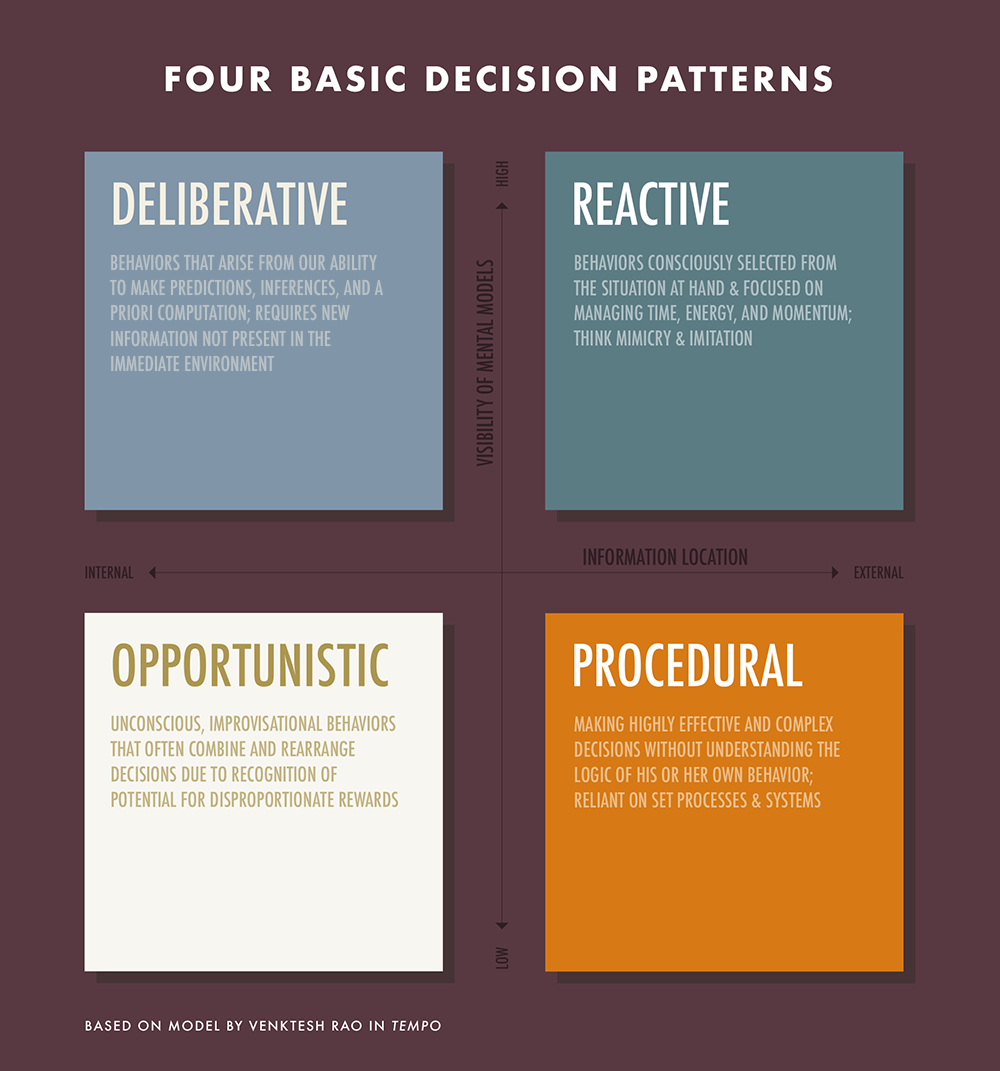I’m grossly oversimplifying what author Venkatesh Rao puts forward in his book Tempo: Timing Tactics and Strategy in Narrative-Driven Decision-making, but I liked his part on Basic Decision Patterns so much that I decided to create a more graphic representation of his 2×2 quadrant to help me remember it for later.
His quadrant shows “Information Location” across the x-axis going from Internal to External and “Visibility of Mental Models” on the y-axis going from Low to High. He says this of his matrix:
The distinctions among the four classes of basic decision patterns are not arbitrary. They are based on the distribution and visibility of situational information. Information either originates in the decision-maker’s head or in the environment, and we either consciously recognize or are oblivious to the influence it has on our behavior.
I’ve paraphrased and summarized the four in the graphic and below:
Deliberative
High visibility of mental models, internal information location
Behaviors that arise from our ability to make predictions, inferences, and a priori computation; requires new information not present in the immediate environment.
Reactive
High visibility of mental models, external information location
Behaviors consciously selected from the situation at hand; focused on managing time, energy, and momentum; think mimicry & imitation.
Opportunistic
Low visibility of mental models, internal information location
Unconscious, improvisational behaviors that often combine and rearrange decisions due to recognition of potential for disproportionate rewards.
Procedural
Low visibility of mental models, external information location
Making highly effective and complex decisions without understanding the logic of his or her own behavior; reliant on set processes & systems.
Throughout the time I was reading Tempo, I found myself trying to relate its various topics and definitions back to my day-to-day work at Barrel. When thinking about the four basic decision patterns, I tried to think of the patterns that I found myself following throughout a typical work week and if there were instances where I could have behaved differently. In many ways, I found myself thinking that by forcing myself into a more Deliberative state, I could better set myself up for success when I defaulted into Reactive and Procedural states. As for Opportunistic patterns, I think these instances are characterized by the happy moments when I feel like I’ve found a clever way to finish an arduous task quickly or to benefit multiple clients through a single newly gained insight.
The beauty of Tempo‘s various models is that they force me to think about how the mind goes about performing its many complex functions in countless situations and how our awareness of time, space, and the various narrative and cognitive frameworks can help decode the factors that shape our decisions.
